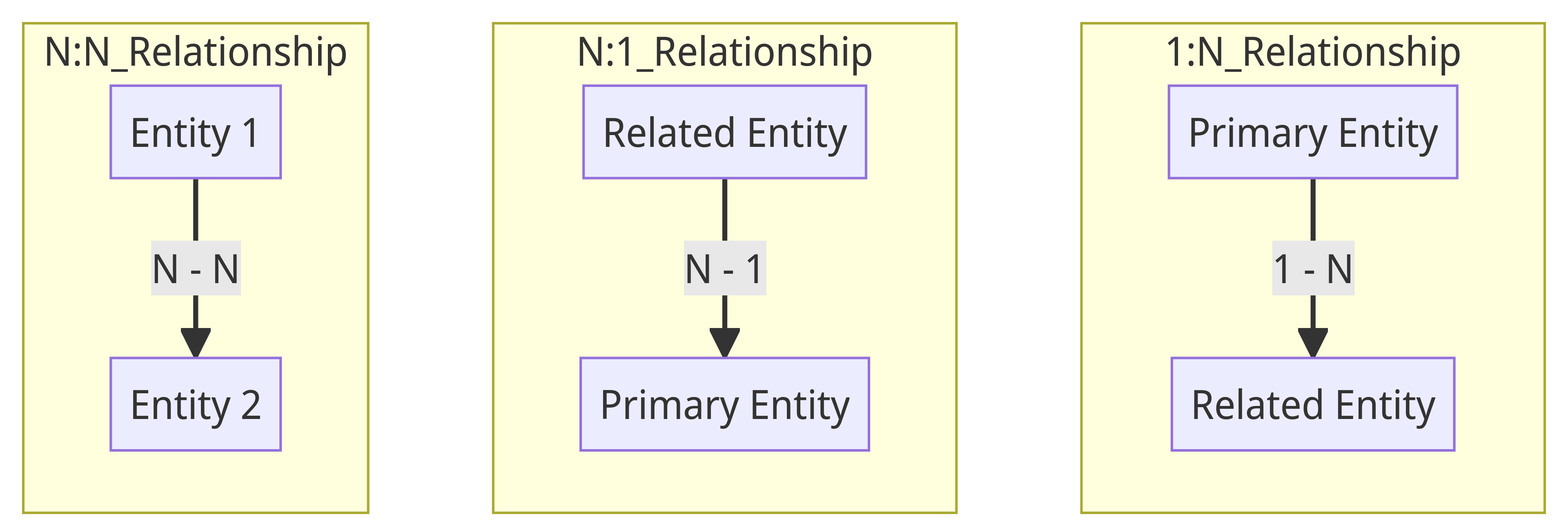The three main types of relationships in Microsoft Dynamics CRM: 1:N (One-to-Many), N:1 (Many-to-One), and N:N (Many-to-Many) relationships.
let's discuss the three main types of relationships in Microsoft Dynamics CRM: 1:N (One-to-Many), N:1 (Many-to-One), and N:N (Many-to-Many) relationships.
**1:N Relationship (One-to-Many):**
- **Definition:** In a 1:N or One-to-Many relationship, one record in the primary entity is associated with many related records in the related entity. It's a unidirectional relationship where records in the related entity can be linked to only one record in the primary entity.
- **Example:** Think of the relationship between an "Account" (primary entity) and "Contacts" (related entity). An account can have many contacts associated with it, but each contact is linked to only one account.
**N:1 Relationship (Many-to-One):**
- **Definition:** In an N:1 or Many-to-One relationship, many records in the primary entity can be linked to a single related record in the related entity. It's the reverse of the 1:N relationship, where multiple records point to a common related record.
- **Example:** Consider the relationship between "Contacts" (primary entity) and "Account" (related entity). Many contacts can be associated with a single account, but each contact is linked to only one account.
**N:N Relationship (Many-to-Many):**
- **Definition:** In an N:N or Many-to-Many relationship, many records in one entity are associated with many records in another entity. It's a bi-directional relationship, and it requires a separate "intersect" entity to store the connections between records.
- **Example:** Think of the relationship between "Contacts" and "Opportunities." Many contacts can be associated with many opportunities, and vice versa. To manage this, you'd use an intersect entity, often called "Connections" or something similar, to store the links between contacts and opportunities.
- **1:N Relationship:** This is commonly used for scenarios where one record has multiple child records. For instance, an account having multiple associated contacts or activities.
- **N:1 Relationship:** Useful when multiple records need to be linked to a single parent record. For example, associating multiple contacts with a single account.
- **N:N Relationship:** Employed when you have a many-to-many relationship between two entities, such as associating multiple products with multiple opportunities in a sales scenario.
Understanding these relationship types is essential for designing your CRM system effectively, as it helps define how data is structured, connected, and related within the system. Properly defining and configuring these relationships is crucial for data accuracy and functionality in Dynamics CRM.

Comments
Post a Comment